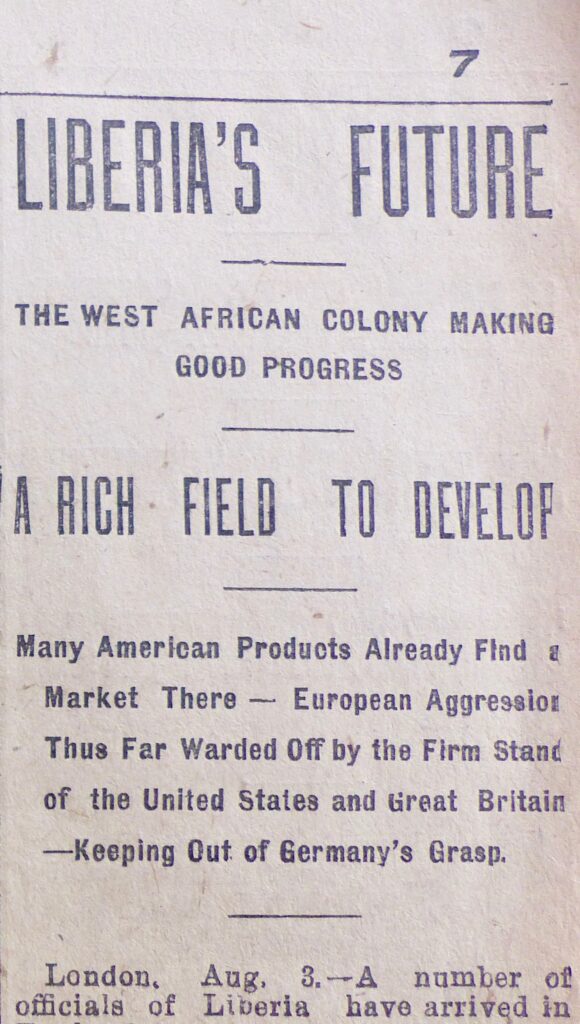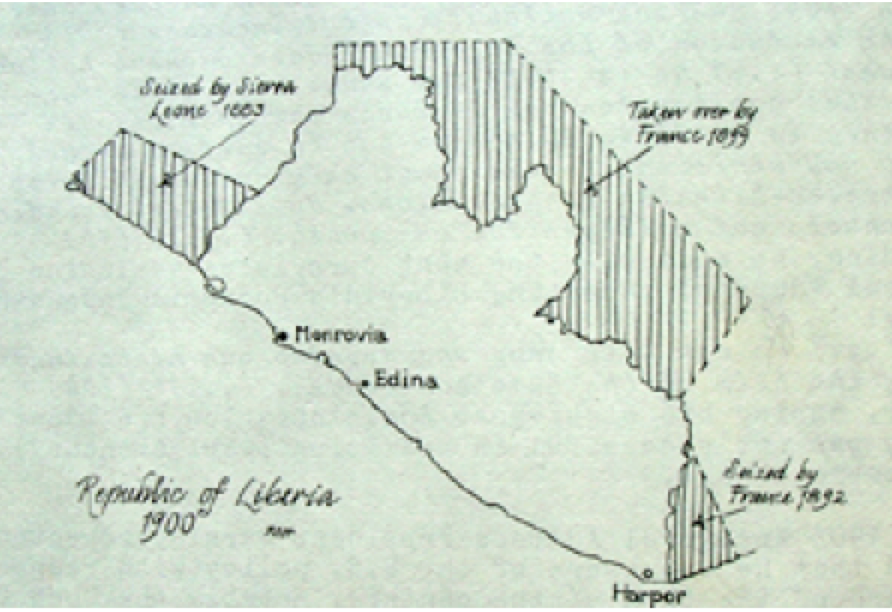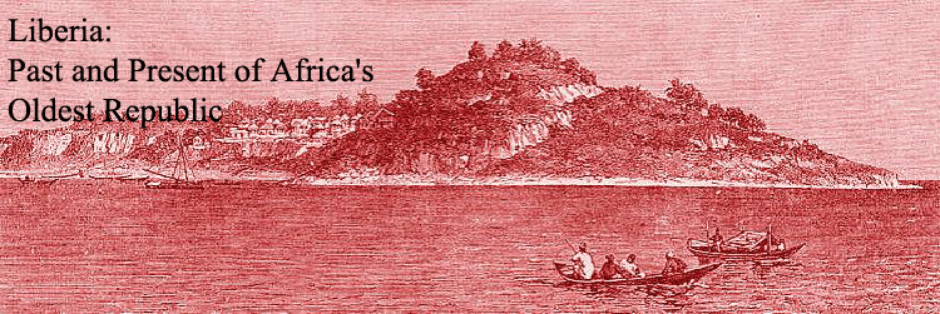I continue browsing through old American newspapers (see my previous posts). Today I found a remarkable article in a New York paper, the Watertown Reformer and Semi-Weekly Times of Wednesday, August 7, 1901.

The article is entitled Liberia’s Future and it deals with Liberia’s foreign relations, its economic prospects, its financial situation, and the state of the art with respect to immigration. The article starts as follows:
“London, August 3, (1901).
A number of officials of Liberia have arrived in England for the purpose of endeavoring to procure from Great Britain the right to navigate the Manna river, which separates Liberia from Sierra Leone. The delegation consists of Secretary of the Treasury Barclay, Chief Justice Roberts and senator King.”

I was struck, not only by the contents of the article, but most of all by the heading “The West African colony making good progress”. What?! The West African colony? Which colony? Whose colony? In 1901?! We’re talking about a newspaper article of 1901, more than 50 years after the founders of the first African republic declared Liberia an independent and sovereign state, in 1847. It was published by a New York newspaper, hence the qualification ‘West African colony’ can only refer to an American point of view.
Then, secondly, the article mentions in a succinct summary that the “European aggression is warded of” and “Keeping out of Germany’s Grasp”.
It is interesting to note what a Liberian delegation member, Barclay, said to reporters of the Associated Press: “Thanks to the firm stand of the United States and Great Britain we are not troubled by the European aggression, though, to tell the truth, we are rather afraid of Germany as she is so patiently on the lookout for colonies. However, I do not think she will get a chance to appropriate our country.”
The last quarter of the 19th century the existence of Liberia as an independent nation was more than once endangered. In the 1880s Great Britain successfully exerted pressure on Liberia to cede the Galinhas territory, between the Sherbro and Mano rivers. From then on the Mano river formed the boundary between Liberia and Sierra Leone. In 1879 France attempted to establish a protectorate over Liberia. In 1885, Spain attempted the same. Also in 1885, France made a second attempt to annex Liberia, followed in 1886 by Germany. In 1892, France annexed the territory east of Cape Palmas (formerly part of the independent republic of ‘Maryland in Africa’). Desperate, the Liberian government in 1893 asked the United States to establish a protectorate over the country. In vain, the US government declined the offer but undertook diplomatic action to protect its West African stepchild.
Seen against this background, the Watertown Reformer heading which calls Liberia ‘the West African colony’ sounds differently.

After 1900:
In 1903 an Anglo-Liberian Boundary Treaty was signed, which precisely described the boundaries between Liberia and Sierra Leone. Still in 1904 England again tried to establish a protectorate over Liberia. And in 1907 the Liberian Government officially acknowledged the loss of about 2,000 square miles to France and accepted the Cavalla river as the official boundary between Liberia and the French colony of Ivory Coast. Ironically, as Liberian government officials who negotiated the Liberian-French boundary treaty ignored the fact that the official description of the flow of a river starts at its source downward to its mouth, they thought making a good deal while accepting the clause that the right bank of the Cavalla river formed the boundary between Liberia and the French colony of Ivory Coast. Hence, France gained authority over the entire river.
